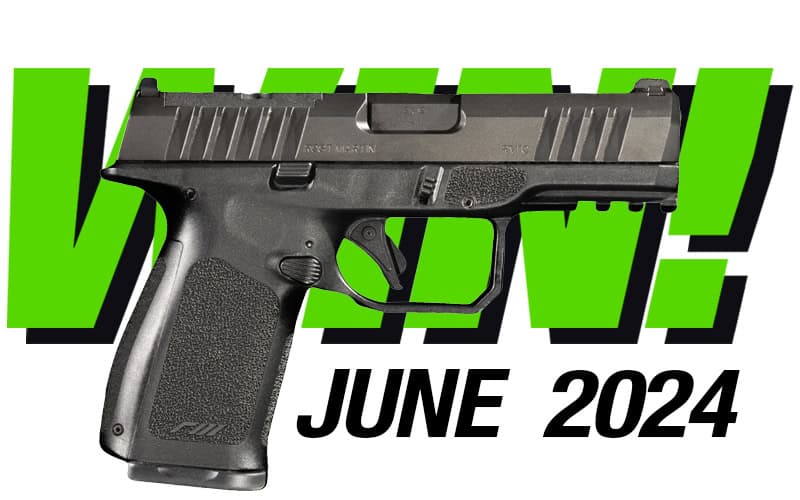The Lightweight 9mm 1911
Once shunned, now a favorite
Along about 1950, Colt debuted the first American-made pistol in 9mm Luger. The U.S. military was thinking about retiring the venerable .45 of 1911 in favor of a 9mm for compatibility with their Allies in case of another land war in Europe. Colt figured the 1911 could be so chambered and lightened to boot. The result was the Commander, with a 4.25″ instead of a 5″ barrel, and another first: a lightweight aluminum frame.
When the military decided to stay with the .45 for the nonce, Colt went commercial with the Commander. It was offered in 9mm, but also in .38 Super and of course, .45 ACP. Revolver expert Bob Nichols declared it to be the one autoloader that had captured his heart, and nascent gun writer Jeff Cooper would include it in his battery as a convenient pistol for wear under a suit, and to be “carried much and shot little.”
Cooper, the high priest of the .45 ACP, naturally chose that caliber — and so did most of the handgun buying public. A few, mostly in the Southwest, chose .38 Super and almost no one at all bought into what was then “the enemy’s cartridge,” the 9mm Parabellum. The time came when the 9mm and eventually even the .38 Super Commander were dropped from the catalog, with only .45 ACP remaining.
That was then. This is now.
Times Have Changed
The 9mm was on the hind teat of 1911 popularity for a very long time, for then-good reasons. For most of that time, the .45’s reputation as a fight-stopper far exceeded the 9mm. People who bought 9mms wanted either double-action or double-stack capacity, neither of which the 1911 provided.
And then there was the reliability factor. John Moses Browning designed the 1911 around the .45 ACP cartridge. The .38 Super, introduced in 1929, was designed for the 1911 pistol. Both worked well. The 9mm/1911 combination was a mid-20th Century concept built in hopes of a military contract and the distinctly shorter overall length of the 9mm Luger created cycling and feeding problems.
As time went on, the 9mm grew in popularity. The ammo was cheap and the recoil was mild — two huge selling points. Ammunition advances made the .45 better and the 9mm a whole lot better, closing the gap from the “stopping power” side. Shooters discovered the heavy Government Model made the 9mm’s kick ridiculously soft. In fact, it was so soft savvy instructors like the late Tim Noe and the thankfully still with us Bonnie Young chose Colt Commander 9mms to both carry and teach with. It was discovered the recoil was awfully light in the 9mm versions of those guns, too, and many found this shorter gun better balanced.
Perhaps most important, gunsmiths learned to tune the 1911 to run reliably with the short 9mm cartridge. Around the turn of the 21st Century, I made Master in IDPA Enhanced Service Pistol with a 9mm Colt Government Model tuned by Al Greco. In 2005, the Dave Williams-designed Springfield Armory EMP hit the market — this Enhanced Micro Pistol was a 1911 scaled down expressly for the 9mm Luger and fed it wonderfully. It wasn’t long before Nighthawk Custom was producing 9mm 1911s that worked, thanks to the combined input of Shawn Armstrong and Bob Marvel. Most recently, Bill Wilson designed the EDC 9 series, Wilson Combat’s updated take on the 1911 concept, which combined 9mm Commander-ish size with superb workmanship and higher capacity.
By 2019, premier 1911 manufacturer Bill Wilson told me he was producing more 9mm 1911s than .45s. The sound you hear may be Jeff Cooper rolling in his mausoleum, but such are the tastes of modern buyers.
Oh, and the Commander angle? Some 1911 aficionados are convinced the 4.25″ Commander format runs the 9mm 1911 the most reliably, because the 3/4″ shorter overall length makes the slide lighter and easier for the weaker recoil impulse of the 9mm to run. The original Colt Commander, remember, was an aluminum frame pistol and in this format is lighter to carry.
Personal Commentary
I had always sort of thought I’d end up with a lightweight Colt Commander .45 as a carry gun when I retired. I’m not there yet, but am leaning a bit toward the 9mm version. Old age and arthritis will do that. Such .45 men of the past as Pat Rogers and Walt Rauch had switched to 9mm before they left us, Pat with the S&W M&P and Walt with the 1911, for those reasons. Experts still here who shot their way to fame with .45 1911s have admittedly switched to the 1911 versions, Ken Hackathorn for practice and Bill Wilson all the way.
On my side, I confess to carrying 9mms more than .45s these days. I have full-size all-steel 1911s in the Parabellum chambering for competition, a Nighthawk Falcon with fiber optic sights for IDPA ESP and a match-grade Springfield Armory with adjustable sights for centerfire bull’s-eye and PPC. When I carry a 9mm for personal protection and teaching, it’s “short and light.” The Springfield EMP 9mm I bought when it came out 16 years ago still has a place in my gun safe and my heart. A Ruger Lightweight Commander 9mm I won in a match in 2017 has been with me when I’m out and about, and when in “10-round limit” states you might find me teaching with my 4.25″ aluminum-frame Springfield Armory Ronin 9mm. Their thin profile, sweet trigger, good pointability — and more than 60 years of “1911 habituation” — combine nicely.
In 1950, the 9mm Commander was an anomaly that made shooters ask, “Why?” It took a long time, but today we know why.








